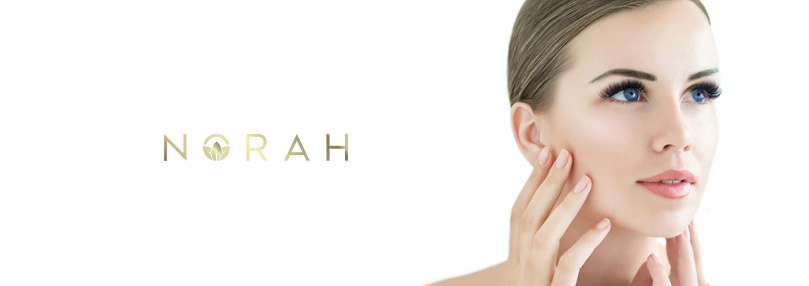 27
Jul
27
Jul
Our belief is every individual is beautiful. Beauty is felt within and creates a glow on the outside. To get this result, it is very important to know everything about our skin. When it comes to our skin, we believe that each individuals skin needs nutrients. Nutrition and personalized ritual to fight against the environment damage and we at Norah would like to provide these for the skin.
It is very important to know the different types of skin and how to recognise it by reading below.
Normal skin: This skin type is neither oily nor dry. Beautiful as it is, it needs care. People with normal skin start showing signs of age and wrinkling sooner than others. Daily cleansing, toning and nourishing is the adequate care for normal skin. Skin care products should keep normal skin moisturised without making it oily. For facial skin, light oil in water-emulsions (cream containing more water than oil or lipids)are recommended during the day. During night time, an oil in water emulsion containing more lipids may be beneficial.
Oily skin: This skin type, has excessive oil producing glands that are overactive. They produce more oil than what our skin requires. Needed. Giving the skin a greasy shine. The pores are enlarged and the skin has a coarse look. This kind of skin also suffers from blackheads, pimples & acne. Oily skin needs special cleansing to keep the pores unclogged. Light oil in water emulsions or oil-free fluids should be used.
Dry skin: Majority people have dry skin. Dry skin lacks both sebum and moisture. It looks fine textured, transparent, patchy and fragile. There are many factors which affect dry skin and make them even more dry. For instance, washing with soap & water not only removes grime but also the natural oils that protect the skin. Exposure to the sun, air- conditioners and heaters also take their toll. Dry skin always needs moisturiser which increases the water content of the outer layer of the skin, giving it a soft, moist look. In dry skin, moisturisers are used to increase the amount of lipids (fatty substances) in horny layer, to reduce water loss and soothe the skin. Water in oil-emulsion (mixtures with more oil/lipids than water) should be preferred.
Combination skin: This type of skin has a greasy area, while the rest is dry or normal. The forehead, nose and chin, i.e. the T-zone, may be greasy and the rest dry. Combination skin are very common and are one of the most frequently mistreated skins. This type of skin needs special care, and requires to use two different moisturising product for each area. The dry part needs water in oil-emulsion( more oil/lipids than water) rich in lipids, whereas only oil in water emulsion (more water than oil /lipids) should be applied on the oily parts to prevent the clogging of pores.
Sensitive skin: Sensitive skin is a lay term rather than a medical diagnosis. It is generally used to describe skin with reduced tolerance to the application of cosmetics and personal care products. In sensitive skin, the application of only few cosmetics products is recommended. These products containing potentially irritating or allergenic should be avoided.
Mature skin: most people over 60 years of age have dry skin. Persons with normal skin often develop dry skin when they reach their fifties, in persons with oily skin, this shift to dry skin may occur even later. In dry skin, moisturisers are used to increase the amount of lipids, to reduce water loss and to soothe the skin. Water in oil-emulsions (mixtures with more oil/ lipids than water) should be preferred. The lipid film smoothes the cragged skin surface and prevents a further loss of water from the epidermis. Water-binding ingredients such as urea, lactic acid and glycerin enhance the hydration effect of moisturisers and are recommended in mature skin.



